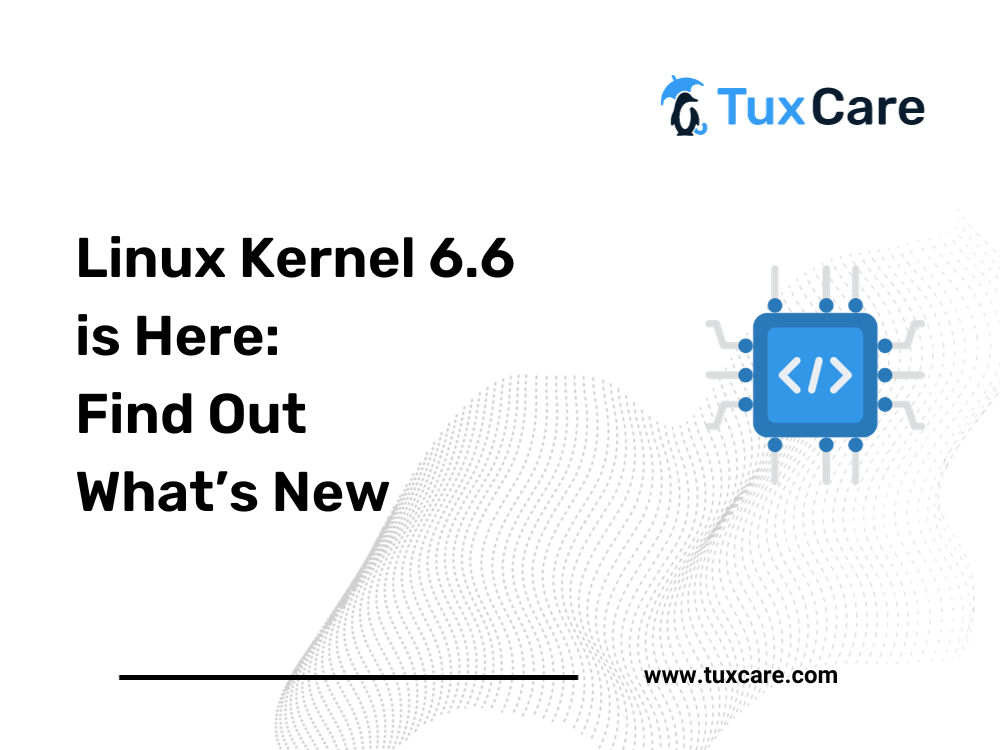Linux Kernel 6.6 is Here: Find Out What’s New
The latest release of Linux Kernel, version 6.6, has just landed, and it’s packed with a bunch of awesome updates. Whether you are a Linux enthusiast or enjoy a smoother, more efficient computing experience, this release has something for everyone.
Linux Kernel 6.6: New Features
Processor Updates
One of the most significant changes in Linux kernel 6.6 is the introduction of the EEVDF scheduler. This scheduler replaces the CFS scheduler code, promising improved performance and efficiency, especially for AMD processors. AMD users can now fine-tune their processor’s capabilities with AMD Dynamic Boost Control, enhancing their overall computing experience. Furthermore, Linux Kernel 6.6 fixes issues that used to lead to kernel panics on AMD Zen-based systems, ensuring a more stable experience.
For Intel and AMD CPU users, the integration of Intel Shadow Stack enhances security by guarding against Return-Oriented Programming (ROP) attacks. Intel cluster scheduling has also been reinstated, boosting performance for modern Core hybrid CPUs. If you use Intel Sapphire Rapids PECI processors, you’ll also benefit from improved compatibility and system monitoring capabilities.
GPU Updates
If you have an AMD GPU, you’ll appreciate the new AMD FreeSync Panel Replay support, which offers a fresh alternative to Panel Self Refresh for laptops. This technology delivers smoother and more dynamic visuals, making your laptop viewing experience even better.
For NVIDIA users, Linux kernel 6.6 strengthens security against potentially malicious behavior from NVIDIA’s proprietary driver, ensuring your GPU system is more secure.
AMDGPU DC expands its reach by integrating with RISC-V architecture for driver display code, making AMD GPU functionalities available on a wider range of devices. There’s also initial support for the Intel Lunar Lake VPU4, setting the stage for improved multimedia capabilities on Intel Lunar Lake devices. With continued efforts to enable Intel Meteor Lake graphics, Intel users can take full advantage of their hardware for enhanced graphics performance.
Security Updates
In Linux kernel 6.6, Security Enhanced Linux (SELinux) has been improved by removing references to the US National Security Agency (NSA). This enhances the security and transparency of the SELinux framework, providing users with a more robust security model.
RISC-V architecture gains security with Kernel 6.6, now supporting Kernel Address Space Layout Randomization (KASLR). This feature randomizes the kernel’s address space layout, significantly bolstering security.
Other Updates
The USB subsystem receives a significant update with the addition of the USB MIDI 2.0 gadget function driver, expanding the functionality of USB devices for MIDI applications. It also includes earlier Lunar Lake USB work, enhancing compatibility and performance for USB-connected devices.
Modern laptops benefit from the introduction of the Intel Visual Sensing Controller (IVSC) driver, offering advanced visual sensing capabilities like facial recognition and gesture control.
However, not all news is about additions; kernel 6.6 declares ReiserFS obsolete, signaling its eventual removal in future kernel versions in 2025.
Lastly, the experimental in-kernel SMB server, KSMBD, which was introduced in Kernel 5.15 in 2021, has matured and can now be relied upon for stable and efficient SMB file sharing within the Linux ecosystem. This should make life easier for many dealing with SMB installation and configuration issues.
Final Thoughts
So, whether you’re a fan of AMD, Intel, or NVIDIA or just love the Linux ecosystem, kernel 6.6 has something to offer everyone. Enjoy the improved performance, enhanced security, and expanded capabilities of this latest release!
Another critical thing to consider is the Linux kernel security. It is essential to patch the Linux kernel to protect it from potential vulnerabilities. That’s where TuxCare’s KernelCare Enterprise comes into play. KernelCare automatically applies all security patches to the Linux kernel without the need for system reboot or patching-related downtimes. It supports all major enterprise distributions, including Debian, Ubuntu, RHEL, CentOS, AlmaLinux, Oracle Linux, and more.
Schedule a conversation with a TuxCare Linux security expert to learn more about live patching and how it can help your organization.
The sources for this article include a story from DebugPoint.



 Documentation
Documentation Login
Login




